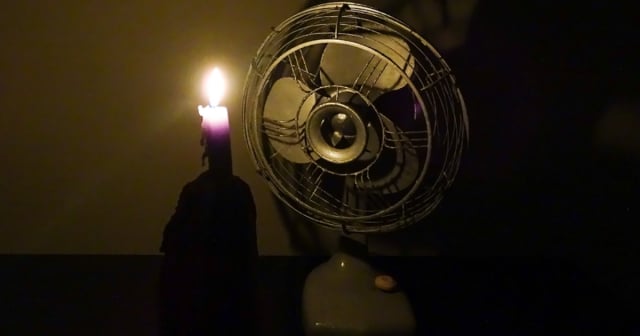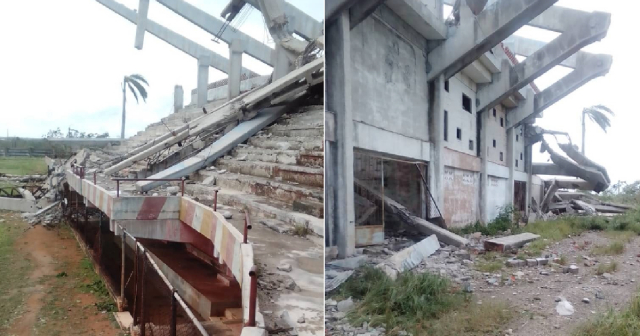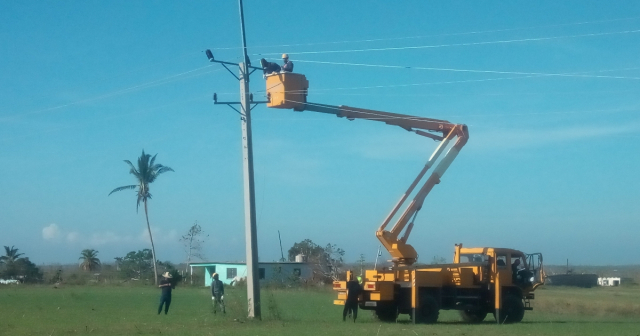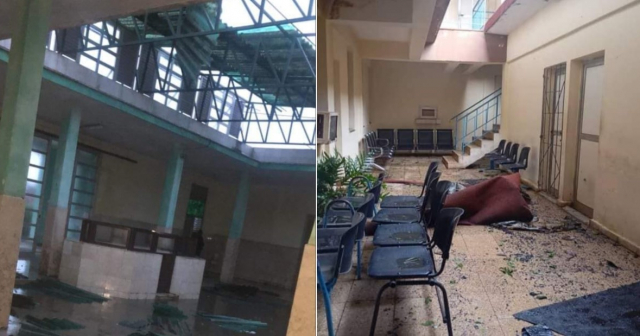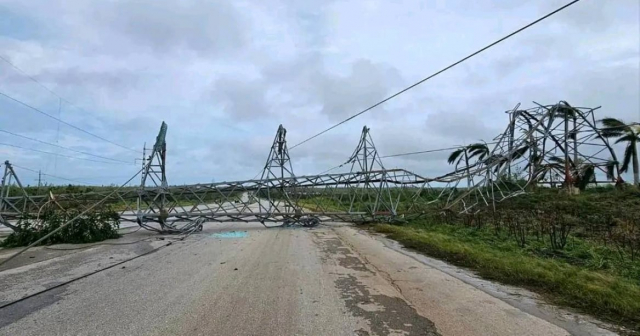Miguel Díaz-Canel visited Artemisa on Wednesday and shared his experience on social media, where he was seen walking hand in hand with an elderly woman who turned out to be the delegate of the Pueblo Nuevo Popular Council in the municipality. During a meeting with residents in this neighborhood, the leader outlined that they have identified sanitation, electricity, and water as "strategic tasks." "We're making progress because we will move forward," he stated, surrounded by populist slogans. "Count on Pueblo Nuevo Council because there is the blood of Artemisa," shouted the delegate in a state of excitement.
"I believe that we have worked in an organized manner, with willingness... Everyone who has been asked to come has come. We have made progress," stated Díaz-Canel, comparing the current disaster to what he encountered on the first day after the cyclone passed.
True to the staged optimism of Cuban regime propaganda, Raúl Castro's successor claims to have observed that the area hardest hit by Hurricane Rafael "is rising with everyone's help," he wrote on the social network X (formerly Twitter) without specifying what he means when he talks about rising.
During his meeting with the residents, Díaz-Canel was approached by the "delegate" of the People's Power, who mentioned she has been in the position for 33 years. The woman was particularly affectionate towards the president and agreed with him that the residents need to help dig holes, clear areas where posts need to be placed, and "concentrate" the trash for collection.
According to the state media, this is the third time Díaz-Canel has visited Artemisa following Hurricane Rafael. The first visit occurred on November 7th, just 24 hours after the cyclone passed.
During his visit, the man responsible for keeping Cuban jails filled with political prisoners went to kilometer 32 of the Havana-Pinar highway, where he inquired about the work to replace six high-voltage towers that were brought down by strong winds. These towers connect Mariel with the territory of Pinar del Río.
According to Cuban television, teams are currently dismantling damaged structures to replace them with new ones, and they plan to erect the first tower in three days, continuing in this manner. The recovery efforts are expected to take approximately 18 days.
Díaz-Canel also visited the Ciro Redondo Hospital in Artemisa, where its director, Niurka Larrionda Valdés, explained that the main damage caused by winds exceeding 100 km/h was seen in the glass windows and drop ceilings, which led to leaks. She also stated that they "never" experienced power outages. "We never ran out of fuel for the generators or for water pumping."
The leader summarized his visit with a grandiose statement reported by the state media: "Now the hospital will be nicer than before." He also promised that some water pumping infrastructure would be improved.
Damages caused by Rafael
Almost fifty sports facilities were affected in Artemisa by Hurricane Rafael, with damages ranging from structural collapses to the loss of equipment. The atmospheric phenomenon caused destruction in 48 locations, including the 26 de Julio baseball stadium. Additionally, there is the severe crisis it has plunged the health sector into, impacting a total of 119 centers across the 11 municipalities of the province.
87.09% of Artemisa was left without electricity after the passage of Rafael. Only 26,384 customers, or 12.91%, had their service restored a week after the hurricane struck Western Cuba.
Today, in Maisí
After his visit to Artemisa, the Cuban leader visited Maisí on Thursday, where he reiterated his populist slogans. "Guantánamo is rebuilding, three weeks after Hurricane Oscar," he wrote on X.
Particularly striking was a meeting with residents of Maisí, where Díaz-Canel mentioned that 99.7% of the electrical system has been restored. Everyone present remained silent with long faces.
Filed under:

